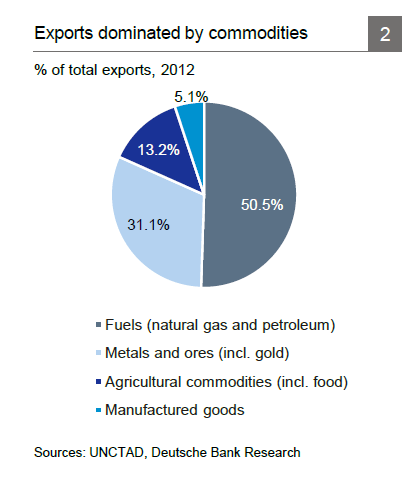The South American country of Bolivia is bordered by Argentina, Brazil, Chile, Paraguay and Peru. The country has a population of over 10.4 million. Here is a brief overview on the economy of Bolivia from CIA’s The World Factbook site:
Bolivia is one of the poorest and least developed countries in Latin America. Following a disastrous economic crisis during the early 1980s, reforms spurred private investment, stimulated economic growth, and cut poverty rates in the 1990s. The period 2003-05 was characterized by political instability, racial tensions, and violent protests against plans – subsequently abandoned – to export Bolivia’s newly discovered natural gas reserves to large Northern Hemisphere markets. In 2005, the government passed a controversial hydrocarbons law that imposed significantly higher royalties and required foreign firms then operating under risk-sharing contracts to surrender all production to the state energy company in exchange for a predetermined service fee. The global recession slowed growth, but Bolivia recorded the highest growth rate in South America during 2009. During 2010-12 high world commodity prices sustained rapid growth and large trade surpluses. However, a lack of foreign investment in the key sectors of mining and hydrocarbons, along with growing conflict among social groups pose challenges for the Bolivian economy.
Some of the interesting facts about the Bolivian economy are listed below:
- The GDP was over $56.0 billion in 2012 based on purchasing power parity.
- The population below poverty line is about 50%. Poverty line is generally defined as living on less than $2 per day.
- Bolivia’s major exports are:natural gas, soybeans and soy products, crude petroleum, zinc ore and tin. The major export partners are: Brazil, Argentina, U.S. and Peru.
- The major imports are: petroleum products, plastics, paper, aircraft and aircraft parts, prepared foods, automobiles and insecticides. The top import partners are: Chile, Brazil, Argentina, U.S., China, Peru and Venezuela.
Source: The World Factbook, CIA
A few other facts about Bolivia from Deutsche Bank’s Frontier Country Report are listed below:
- Real GDP is projected to grow by 5% in 2014.
- Most of the FDI inflows are into the existing gas-producing companies.
- Gross public debt stood at 31% of the GDP.
- Bolivia is net creditor country with persistent current account surpluses.
- Some of the top weaknesses of Bolivia are: Poor business environment, corruption, nationalization of private firms, high political risk and frequent social unrest discourage private investment. Bolivia depends heavily on commodity exports especially hydrocarbons as shown in the chart below:
Click to enlarge
Source: Bolivia, Frontier Country Report, Dec 20, 2013, Deutsche Bank Research
- Revenue from hydrocarbon exports accounted for about 45% of total public revenue. Bolivia’s natural gas is shipped exclusively to neighboring Brazil and Argentina. The high dependence on commodities exposes Bolivia’s economy to the volatile fluctuations of global commodity prices.
From an investment perspective, none of the companies from Bolivia are listed on the NASDAQ or NYSE. In addition, no country-specific ETF currently exists for Bolivia.




